Growing these vegetables isn’t just about having an unconventional garden feature, though that’s probably reason enough. No…these scrumptious plants are no more difficult to grow than their “normal” counterparts. They are also (inconspicuously, it has to be said) absent from supermarket aisles. Yet another reason to clear a space in your raised bed…or find a nice pot for them.
Seeds and roots are readily available online and many, such as the black radish, are hardy through winter. So you don’t need to be constrained by the seasons. Enjoy…
Purple (or White) Asparagus
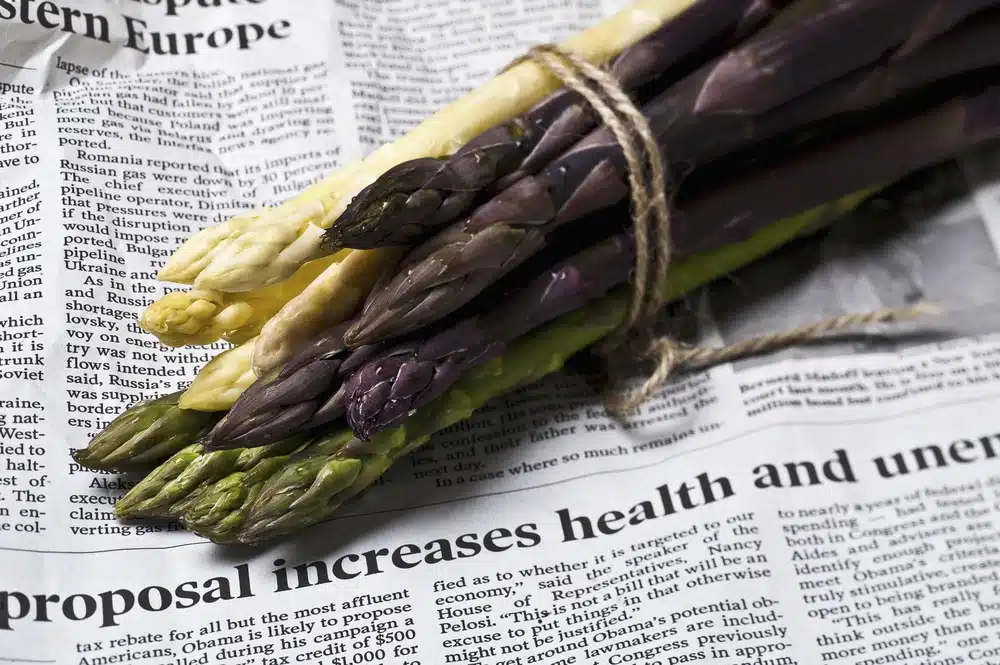
Ok, so it’s two really. Asparagus is a perennial that’s really worth growing if you have the time. The purple varieties have a higher sugar content so can be eaten raw. White asparagus is a normal asparagus spear that’s achieved by mounding soil over the emerging stalk so that it can’t photosynthesize. Crowns for both green and purple are available to buy online.
Brukale
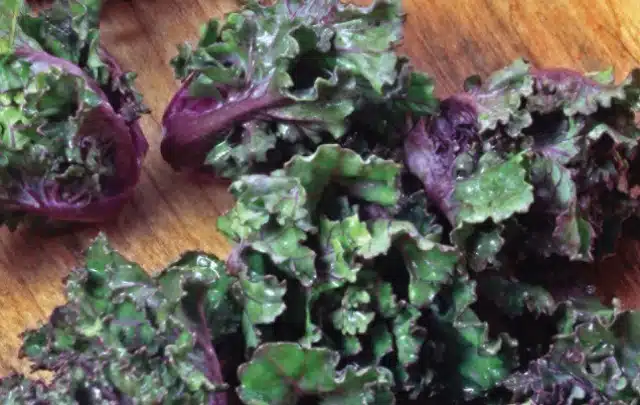
What happens if you cross kale with Brussels sprouts? You get Brukale! Instead of having little sprout balls along its main stem, it grows little fronds of milder-tasting kale. Very hardy plant that will stand in the ground over winter.
Giant Black Radish (Black Spanish Long)
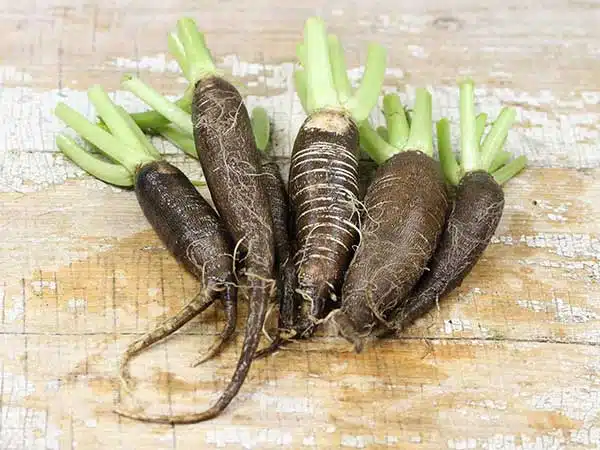
A great winter vegetable. Sow in July/August for an October/November harvest. They grow to quite a hefty size, up to a foot long, so you’ll likely need only a few plants.
Coloured Carrots
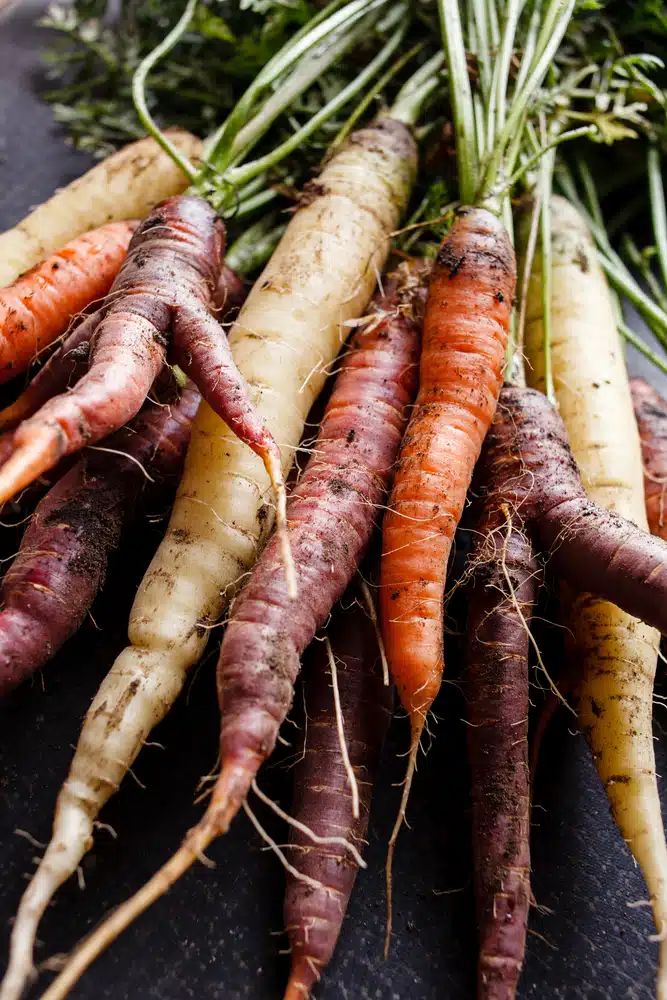
Purple, yellow, white…take your pick. “Purple Haze” is the most common purple variety and has a gorgeous colour. Probably my favourite out of all the choices on this list.
Zephyr Courgette
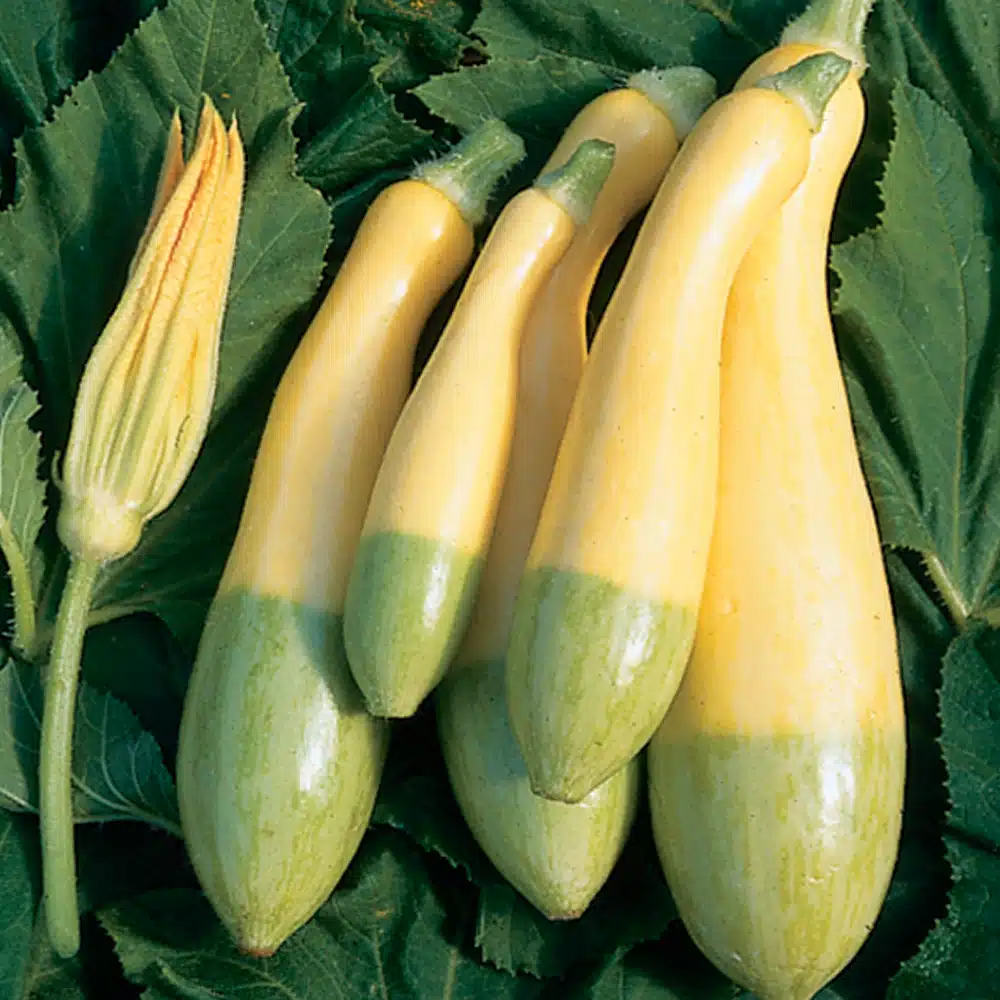
This is a typical courgette with a cream colour and light green tip. Because the squash develops above ground they can play a nice ornamental (as well as edible) role. Don’t forget that you can also eat the flowers!
Bonus: Purple Potatoes
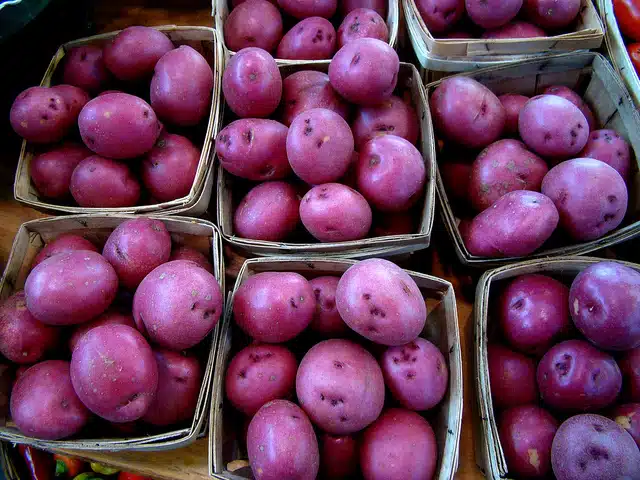
Purple potatoes are becoming more common nowadays, especially in health-food stores. The pigment that causes the unusual colour, anthocyanin, is a potent antioxidant.
Image Credits
Spanish Long Radish: Rare Seeds
Brukale: Johnson’s Seeds
Zephyr Courgette: Thompson & Morgan
Blue Potatoes: Vasenka Photography